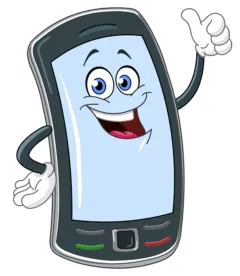Overview of the Ruling
On March 16, 2018, just before tip-off in the first round of the NCAA tournament, the D.C. Circuit provided the TCPA defense bar with a new playbook of sorts, in the form of a decision that will surely change the game for TCPA litigation. The case, of course, is ACA International v. FCC, and the ruling came down nearly 18 months after oral arguments. ACA Int’l et al. v. FCC, No. 15-1211, Doc. No. 1722606 (D.C. Cir. Mar. 16, 2018). It appears to be worth the wait as the D.C. Circuit slam dunked the former definition of automated telephone dialing equipment (“ATDS”) and the “one-call safe harbor” rule for reassigned numbers.
The background of the ACA v. FCC case, and the TCPA itself, is well known to those in the field, but a quick refresher is warranted to appreciate the significance of this recent decision. On July 14, 2015, the FCC issued a now-infamous Declaratory Ruling and Order (“2015 FCC Order”) in which it addressed 21 separate petitions for rulemaking or requests for clarification. 2015 FCC Order, 30 FCC Rcd. 7961 (2015). In the 2015 FCC Order, the FCC “sought to clarify various aspects of the TCPA’s general bar against using automated dialing devices to make uninvited calls.” ACA Int’l at 4. In reality, the 2015 FCC Order fell far short of clarifying anything, and indeed did nothing to curb what the FCC described as “a surge in TCPA lawsuits (including class actions) in recent years.” ACA Int’l, at 8 (citing 2015 FCC Order, at 7970 ¶¶ 6–7). As a result, a number of regulated entities appealed the 2015 FCC Order to the D.C. Circuit Court of Appeals.
In the consolidated appeal, petitioners challenged four aspects of the 2015 FCC Order: (i) the definition of an ATDS; (ii) “re-assigned number” issues; (iii) revocation of consent; and (iv) the limitation on the exemption for exigent health care calls. ACA Int’l, at 4.
On the third and fourth issues—revocation of consent and the health care call exemption—the D.C. Circuit upheld the FCC’s positions. ACA Int’l, at 5. The court sustained the FCC’s “approach to revocation of consent,” concluding a party may revoke consent through “any reasonable means,” and also upheld the FCC’s stance on the scope of the TCPA’s “exemption for time sensitive healthcare calls.” Id.
But, the real impact of the ACA International decision, and what will inevitably score defense victories in TCPA litigation, is how the court ruled on the first two issues. Namely, the Court rejected the broad (and contradictory) definition of an ATDS and also tossed out the “one-call safe harbor rule” as applied to re-assigned numbers.
ATDS
The TCPA defines an ATDS as “equipment which has the capacity—(A) to store or produce telephone numbers to be called, using a random or sequential number generator; and (B) to dial such numbers.” 47 U.S.C § 227(a)(1). The ACA v. FCC ruling made a number of important conclusions on this topic as outlined below.
-
In defining “capacity,” smartphones save the day: In the 2015 FCC Order, the FCC provided a confusing and contradictory ruling on what type of equipment qualified as an ATDS. Specifically, the 2015 FCC Order emphasized the “capacity” of dialing equipment and ruled that “dialing equipment generally has the capacity to store or produce, and dial random or sequential numbers (and thus meets the TCPA’s definition of autodialer) even if it is not presently used for that purpose, including when the caller is calling a set list of consumers.” 2015 FCC Order at 7974 ¶ 16. As a result, considerable debate and costly litigation ensued over the issue of whether a device had the “present” vs. “potential” capacity to operate as an ATDS. The D.C. Circuit rejected this approach to the definition of an ATDS, concluding simply that “[v]irtually any understanding of ‘capacity’ contemplates some future functioning state, along with some modifying act to bring that state about.” ACA Int’l, at 13. Instead, the D.C. Circuit went on to point out that the question of whether equipment has the capacity to perform the functions of an ATDS turned more on considerations of how much is required to enable a device to function as an autodialer. Id. at 13–14. The court scrutinized the 2015 FCC Order’s conclusions that downloading an app or adding software “and the enhanced functionality they bring about – are appropriately within a device’s capacity.” ACA Int’l, at 14. The D.C. Circuit took the FCC to task on this point, noting that under that definition, nearly any smartphone could be considered an ATDS simply because the user could download an autodialer app. Id. at 14–15. Ultimately, such a definition would mean that all smartphones were ATDS devices, resulting in hundreds of millions of smartphone users potentially being placed in the crosshairs of the TCPA. The D.C. Circuit found this interpretation of “capacity” exceeded the authority delegated to the FCC by Congress, particularly because the congressional findings in support of the TCPA included concerns about hundreds of thousands of solicitors making calls on behalf of tens of thousands of businesses. Id. at 18–19. To include all smartphones would mean to expand the scope of the statute to “hundreds of millions of everyday callers.” Id. On this basis the D.C. Circuit struck down the 2015 FCC Order’s interpretation of capacity as arbitrary and capricious. Id. at 23.
-
Predictive dialers are TBD: The D.C. Circuit also rejected the FCC’s reasoning on the issue of whether a predictive dialer is, by definition, an ATDS. The court found that the 2015 FCC Order basically played both sides of the fence on that issue. On the one hand, the FCC stated that a predictive dialer could be considered an ATDS only if it had the capacity to generate random or sequential numbers, but on the other hand suggested equipment could be an autodialer even if it lacked that capacity. 2015 FCC Order at 7972–73. The D.C. Circuit found these two positions to be contradictory and untenable, and it set forth a critical question: “A basic question raised by the statutory definition is whether a device must itself have the ability to generate random or sequential telephone numbers to be dialed. Or is it enough if the device can call from a database of telephone numbers generated elsewhere?” ACA Int’l at 25. The D.C. Circuit did not supply the answers to those questions, but it instead suggested that the commission may be entitled “to adopt either interpretation.” ACA Int’l, at 25.
-
Reassigned Numbers and the One-Call Rule
The D.C. Circuit gave TCPA defense lawyers a new reason to celebrate by bulldozing the framework of wrong number TCPA claims and abolishing the “one-call safe harbor” rule.
The D.C. Circuit began its analysis of the reassigned number issue by noting that “there is no dispute that millions of wireless numbers are reassigned each year.” ACA Int’l, at 31. This fact has been the bane of some callers’ existence, and is arguably a driving force behind the growth of TCPA litigation.
Under the TCPA, it is unlawful “to make any call (other than a call made for emergency purposes or made with the prior express consent of the called party) using any automatic telephone dialing equipment or prerecorded voice.” 47 U.S.C. § 227(b)(1)(A) (emphasis added). But who is the “called party”? Is it the original subscriber who gave consent? Or is it the new subscriber who didn’t?
The 2015 FCC Order ruled that the “called party” meant the person actually reached, i.e., the new subscriber. 2015 FCC Order, at 7999–8001 ¶¶ 72–73. Practically speaking, this meant companies that believed they were calling the owner of a number who had given them prior express consent might only find out, via costly litigation (and smug plaintiff lawyers) that in fact the number was reassigned, and the calls were made in violation of the TCPA. The 2015 FCC Order provided a “one-call safe harbor” which allowed callers, who were unaware a number had been reassigned, to make one liability-free call to the new subscriber. Id. at 8001 ¶ 73. For that one call, the FCC found that the caller could rely on the prior express consent of the previous subscriber. So on the one hand, the 2015 FCC Order concluded that a caller could “reasonably rely” on the consent provided by a former subscriber, but on the other hand, found that the caller was entitled to just one liability-free call to the reassigned number. Id. at 8009 ¶ 90. The D.C. Circuit rejected this approach. Essentially, the D.C. Circuit found that it was arbitrary and capricious for the FCC to conclude that one call was likely to provide a caller with reasonable notice that a number had been reassigned. ACA Int’l at 37. The D.C. Circuit could not abide this lack of logic, struck down the “one-call safe harbor” rule and concluded “we must set aside the Commission’s treatment of reassigned numbers as a whole.” Id. at 39–40.
Revocation
The D.C. Circuit upheld the FCC’s “any reasonable means standard” for revocation of consent. The court agreed with the FCC 2015 Order to the extent that it held that a person who previously provided consent could revoke consent by “any reasonable means” orally or in writing “that clearly expresses a desire not to receive further messages.” 2015 FCC Order at 7996 ¶ 64. The D.C. Circuit also upheld the FCC’s “totality of the facts and circumstances test,” and it agreed that one factor to consider is “whether the caller could have implemented mechanisms to effectuate a requested revocation without incurring undue burdens.” Id. Another factor is “whether the consumer had a reasonable expectation that he or she could effectively communicate his or her request . . . . in that circumstance.” Id.
In its ruling, the D.C. Circuit rejected petitioners’ arguments in favor of standardized revocation, finding that “petitioners’ concerns are overstated” with respect to the need to take exorbitant precautions in order to avoid TCPA liability. ACA Int’l, at 41. But, the court did acknowledge that parties may mutually agree upon revocation methods. Id. at 43.
Health Care Call Exemption
The court upheld the FCC’s approach to the scope of health care calls. The arguments in favor of expanding the exemption were brought by petitioner Rite Aid, which sought to include certain non-telemarketing calls that provided vital time-sensitive health care information. Id. at 43. Rite Aid argued that the 2015 FCC Order, limiting the exigent health care exemption to calls regarding health care treatment, conflicted with the Health Insurance Portability and Accountability Act. Id. at 44. But the court disagreed, finding that the FCC was within the bounds of its authority not to include billing and debt-collection calls as exempt from the TCPA consent requirements because “healthcare providers could use ATDS equipment to bombard nonconsenting wireless users with calls and texts concerning outstanding charges without incurring TCPA liability.” Id. at 47.
Analysis/Practical Impact
This decision will change the playing field of TCPA litigation, both in the short and the long term. Practically speaking, some developments to watch for include the following:
-
En banc review: It remains to be seen whether any party will request en banc review of this decision.
-
Stays may be lifted: A considerable number of TCPA cases, across multiple jurisdictions, have been stayed throughout the country on the basis of the ACA v. FCC We can expect many of these stays to be lifted in the near future, along with considerable motion practice on the newly established arguments such as the abandoned one-call rule and the death of the present vs. potential capacity issue.
-
Settlements: Smart plaintiffs’ attorneys will make moves quickly and refine their business model. We can expect to see attempts to settle quickly and perhaps at a discount in some wrong number cases. By approving the FCC’s reasonable reliance standard, the D.C. Circuit has endorsed the fact that callers must be allowed to reasonably rely upon the express consent of former subscribers.
-
Revised contracts and loan agreements: Financial companies facing TCPA exposure for post-revocation calls may want to revise standard loan agreements to include specific, mutually negotiated methods for revocation of consent, a concept that was expressly endorsed by the court.
-





 />i
/>i
